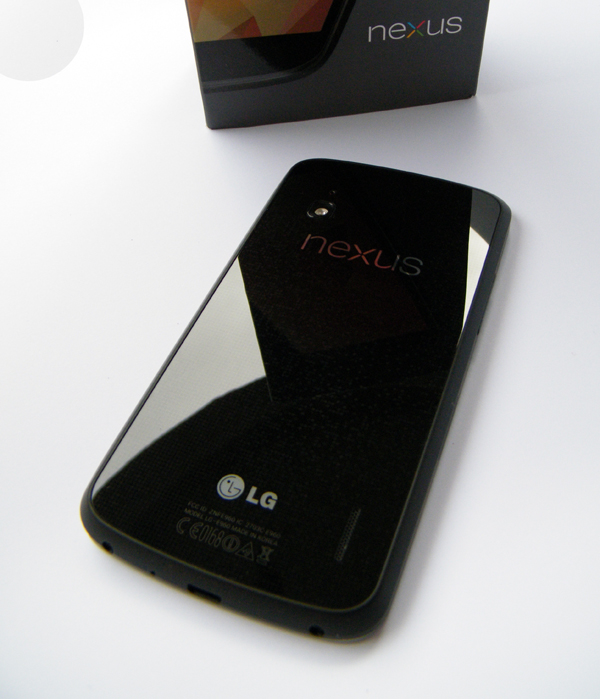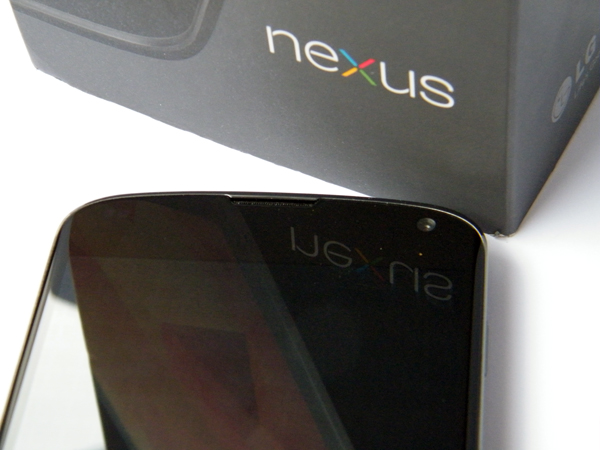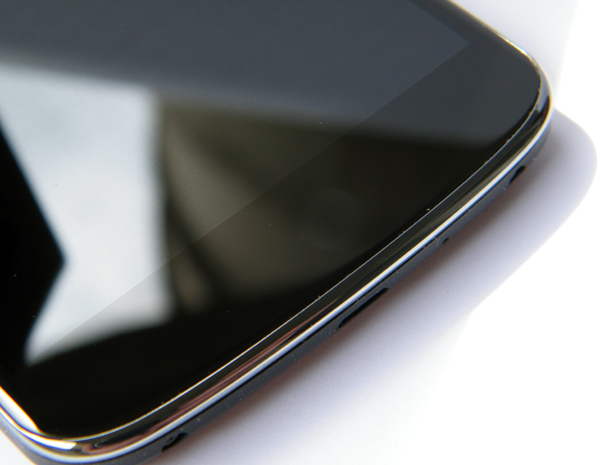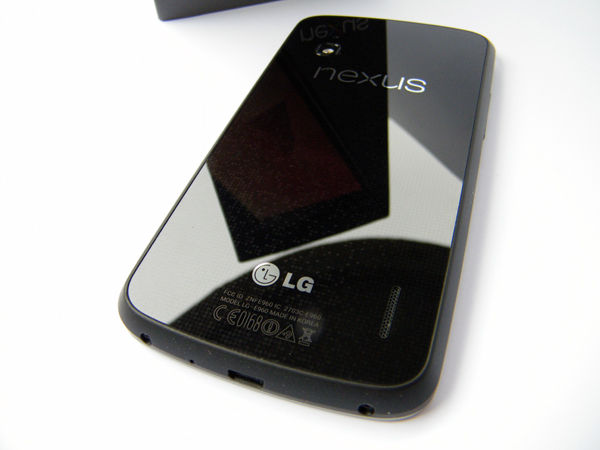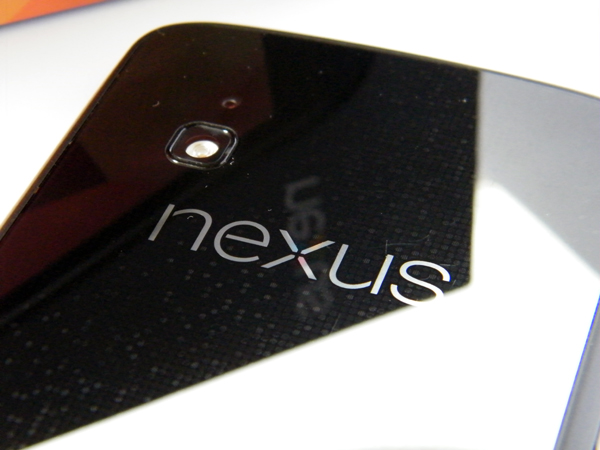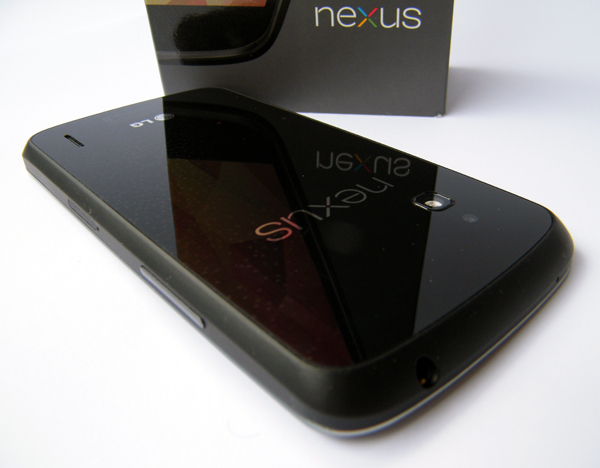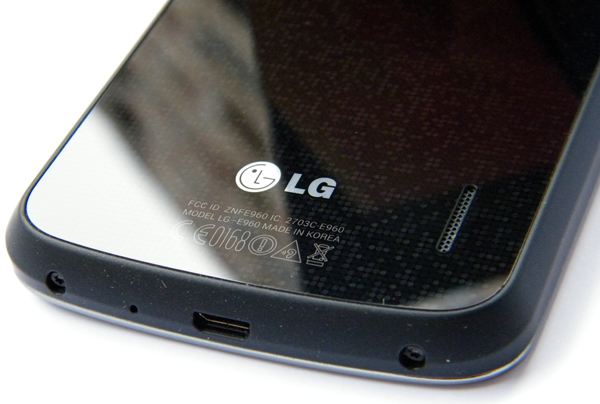Index


Review: Snappy and in a class of its own
The Nexus line of devices has always been considered a premium product line and as it was watched closely by Google, you could always expect premium service in terms of getting the latest OS updates first.
The Google/LG Nexus 4 is the fourth generation Nexus smarpthone and while the One, S and Galaxy Nexus were premium smartphones, the Nexus 4 has another ace up its sleeve. In terms of pricing it fits somewhere in the mid-range segment, yet it has enough muscle to take on high end gear. In order to make a smartphone with a US $299/$349 price tag on Google Play Store, LG and Google had to cut some corners and we honestly think they did an impressive job.
Although it was announced in October 2012 and started to ship just a month later, LG/Google Nexus 4 had been on a rather bumpy road as it was plagued with availability issues for more than a few months after it was launched. The blame was shifted back and forth between Google and LG and at one point in time it was obvious that they either simply could not make enough phones, or did not expect a lot of demand for it.
After almost five months, we finally managed to get our hands on one sample from LG, but since LG's retail price is questionable it is a much better idea to get it from Google's Play Store. We are still talking about the same smartphone, but we’ll get to the price details a bit later.
As we already said, Nexus 4 is more of a mid-range device by today's standards, especially if you look at its US $299/$349 (€299/€349 in EU) price tag. In terms of specifications, it features Qualcomm’s Snapdragon APQ8064 chipset with quad-core Krait CPU clocked at 1.5GHz backed by Adreno 320 GPU and 2GB of RAM. It is obvious that LG did not make any cuts there and the chipset is still very fast indeed, although newer stuff is hitting the market.
LG and Google opted for a beautiful 4.7-inch 1280x768 True HD IPS Plus touchscreen with Zerogap Touch technology hidden behind Gorilla Glass 2 protection glass. Of course, high-end smartphones now feature full HD screens and sizes of 5-inch and beyond but then we are talking about smartphones that easily go over US $500/€500. Then again, there is really not much point in 1080p phones with ultra high ppi density. 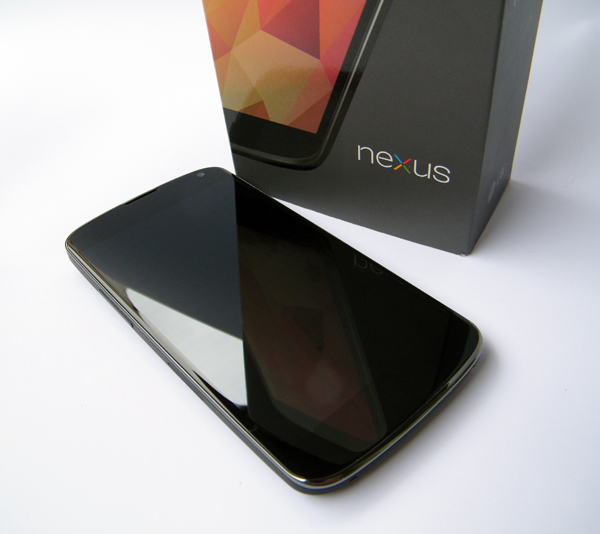
The rest of the specs are where LG decided to cut some corners. LG had to stick with an 8-megapixel camera for the Nexus 4. It also decided to release models with either 8GB or 16GB of storage space without a microSD card slot, while the competition is 32GB models, in some cases with microSD. It also lacks LTE, as Google apparently concluded that it is still not that important (not in Europe, but in the US market it certainly is).
The rest of the specifications include a front facing 1.3-megapixel camera, 802.11bgn dual-band WiFi, Bluetooth 4.0, the usual set of sensors, A-GPS with GLONASS and microUSB (SlimPort) 2.0 port. It has a 2100mAh battery with wireless charging that work with an Qi-compatible wireless charger.
The best part of the story is that it launched with the latest Android 4.2 Jelly Bean OS out of the box while most of the competition, including most LG made phones, were still stuck with Android 4.1 or even Android 4.0.
The smartphone ships in a minimalistic box as well and it feels like Google took a page out of Apple’s book here.
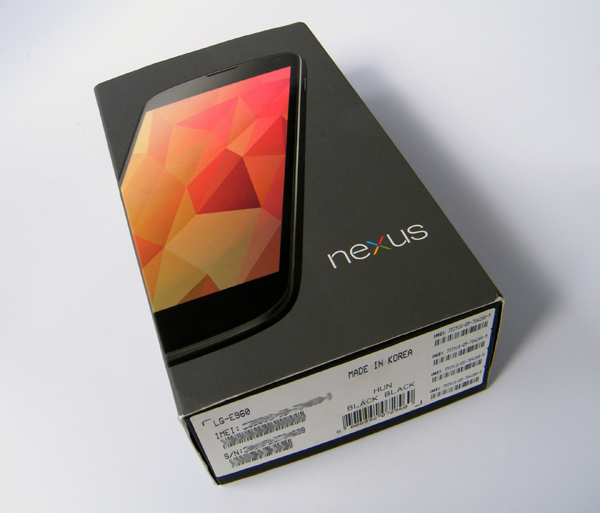
It contains everything that you need including “pin-key” to open up micro-SIM slot, charger with detachable USB cable and quick-start manual. It lacks a headset, which is bundled with most smartphones today, but again you have to cut some corners if you want a US $299/€299 smartphone with high end specs. 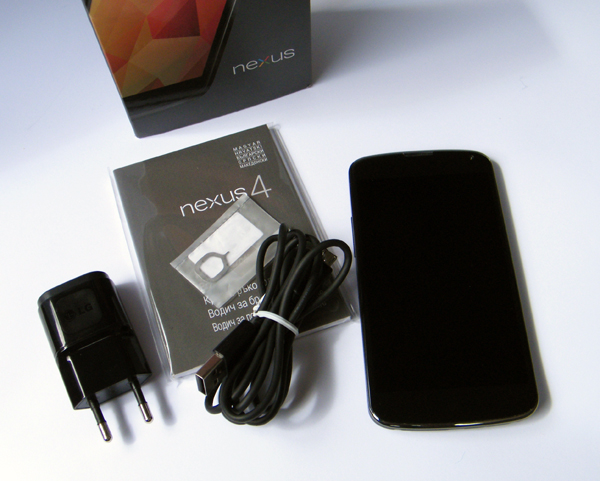
Design wise, LG did a decent job as the smartphone looks quite elegant and sleek with a “special” glass back. The build quality is quite good and we only had one bad thing to say about it but LG and Google fixed it with the recent design change. Since the back side is quite flat when you place the Nexus 4 on a flat surface you completely cover up the speaker so ringing and volume are muffled to a level that you can only hear it if you are sitting next to it. It also slips around surfaces when placed flat on its back, but thankfully LG and Google fixed that problem with the addition of a couple of plastic nubs on the top and bottom of the device.
The dimensions of the Nexus 4 are 133.9x68.7x9.1mm and it weighs in at 134 grams. It is actually quite light for its size and fits perfectly in hand. The Nexus 4 actually has no detachable parts, except for the micro-SIM slot, as the battery is non-removable and it has no microSD slot. As a result, build quality is excellent, much better than the Nexus S and Galaxy Nexus. The glass back feels great, and so do the soft-touch sides, which also provide a lot of grip.
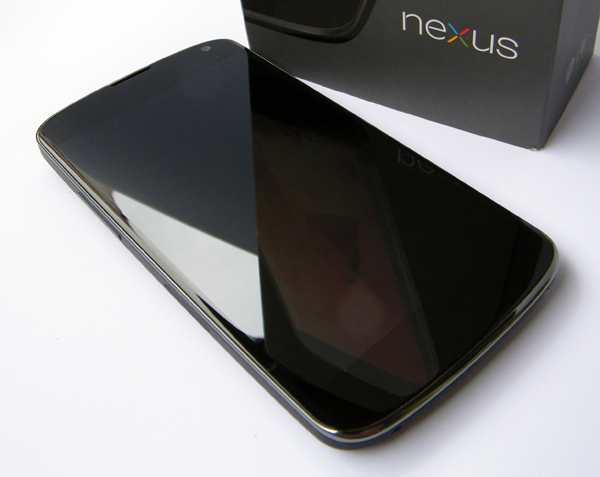
As you can see, the front is dominated by a 4.7-inch screen.
The top part of the front features a small 1.3-megapixel camera on the right and proximity and light sensor on the left, as well as a center placed earpiece.
The bottom part of the front appears to be blank, but actually features a center placed notification LED that pulses when you have missed calls, notifications, e-mails or anything else for that matter.
The back part is quite an interesting one and is also covered by Gorilla Glass 2 although it does not actually look like glass. The glass on the back is actually polarized and the pattern below shifts depending on the viewing angle and light making an illusion of a 3D pattern.
The back also features the main 8-megapixel rear camera with LED flash in the left side of the back.
The right side of the phone features a single power/lock-unlock button.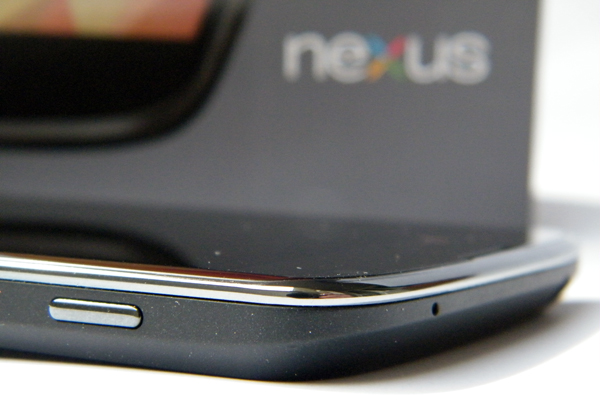
The left side is the “busy” one as you have volume up/down buttons and micro-SIM card slot.
A standard 3.5mm audio jack is placed at the top, but you will have to get some aftermarket headphones.
The bottom part has a center placed micro-USB port with TV-out support and a dedicated microphone with an active noise cancelling that does a really good job when compared to some smartphones that we had a chance to use. Of course, we have to believe third parties that actually told us that after some of the first phone calls. You can also see the quite loud speaker located in the lower right part of the back.
As noted earlier, the touchscreen/display did not fall victim to cost cutting, LG did not cut any corners as although plagued by less than stellar sun legibility, the 4.7-inch True HD IPS+ LCD screen with 1280x768 resolution is quite good. It has a pixel density of just under 320ppi, 680 nits of brightness and a proper RGB matrix. It also features what LG calls Zerogap Touch technology, a way to reduce thickness of layers by getting rid of the air between them. The top most layer is Gorilla Glass 2 that should protect it from most scratches.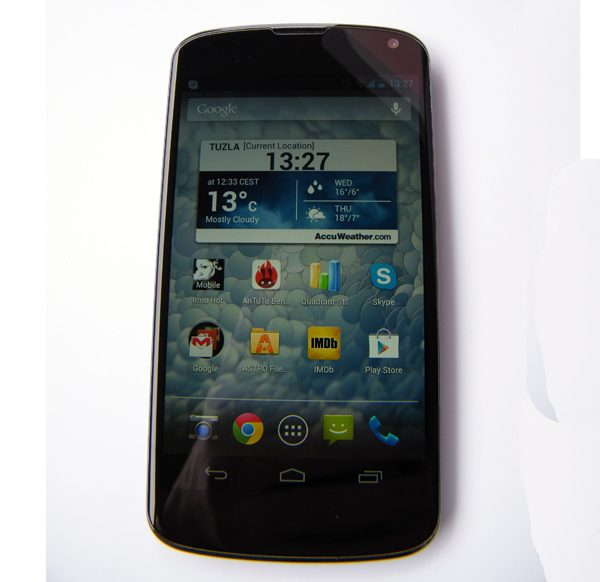
The display features quite impressive viewing angles, black levels are good and it has plenty of brightness to go around. On the other hand it suffers somewhat from bad legibility outdoors due to high reflectiveness of the Gorilla Glass cover.
Here's the main selling point. The Nexus 4 already has the latest Android 4.2.2 Jelly Bean OS and it was the first device to ship with Android 4.2 back in November, along with the Nexus 10. Android 4.2.1 and 4.2.2 just brought some minor updates and bug fixes. We already wrote a lot about Android 4.1 and you can check out a full review of Android 4.1 here.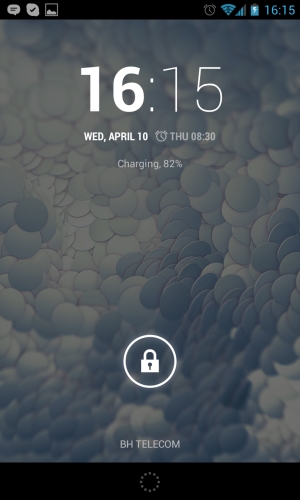
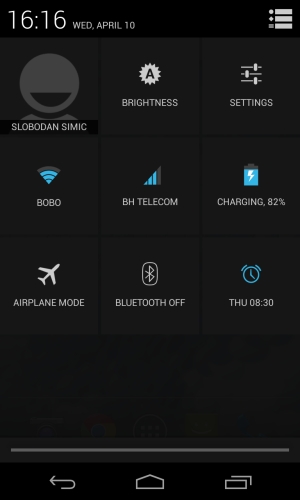
To be quite honest Android 4.2 Jelly Bean is pretty much the same as Android 4.1 Jelly Bean with some minor improvements, including a new Photo Sphere panorama mode, keyboard with gesture typing, lock screen improvements, improved notification power controls with on/off toggle state added with Android 4.2.2, support for Miracast Wireless Display, a couple of accessibility improvements, group messaging, daydream screensavers, new clock app and a couple of other minor updates that came with Android 4.2.1 and 4.2.2.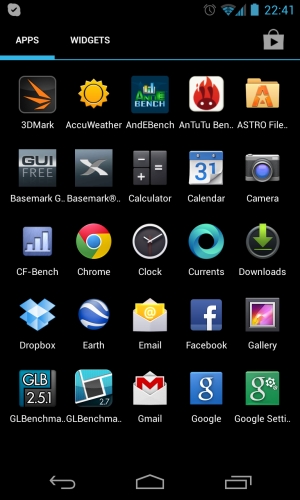
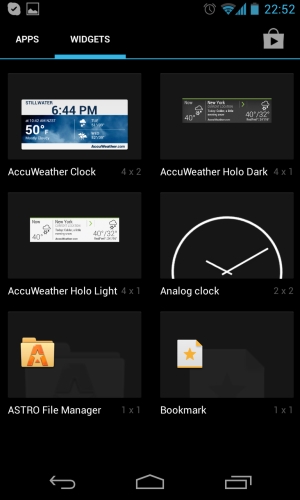
Although some might prefer custom skins like HTC Sense UI or Samsung’s TouchWiz UI, stock Android has an appeal of its own and we certainly like it.
As we noted earlier, in order to hit Google’s US $299/$349 price target, LG had to make some cutbacks and the main camera suffered the most. While competition and for that matter LG’s own Optimus G that shares a lot of features and specs with the Nexus 4 has a 13-megapixel sensor, the Nexus 4 had to settle for a 8-megapixel camera.
The camera app is quite decent and you get an option to shoot HDR photos as well. You can set the resolution, ISO, white balance, focus mode, turn LED flash on/off, switch to front camera or go directly into settings menu from the menu accessible by touching and holding your finger on the main screen. The Android 4.2 camera UI takes some getting used to, but it is a bit better than the one used in Android 4.0 and 4.1.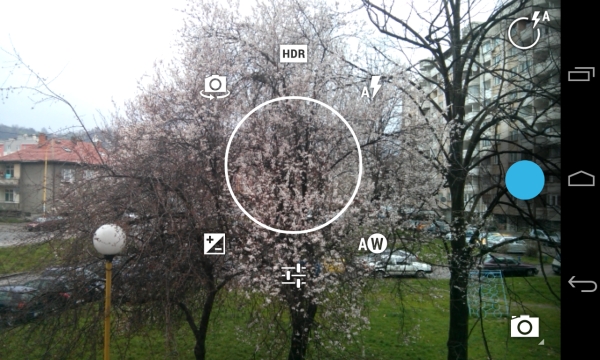
The app also has a button located in the bottom right corner where you can switch between panorama, photo sphere or camera mode. Since it lacks a dedicated shutter button, you are stuck with that blue one on the screen.
The Photo Sphere panorama mode is a lot of fun but takes a lot of patience and only makes sense if all objects in the picture are static.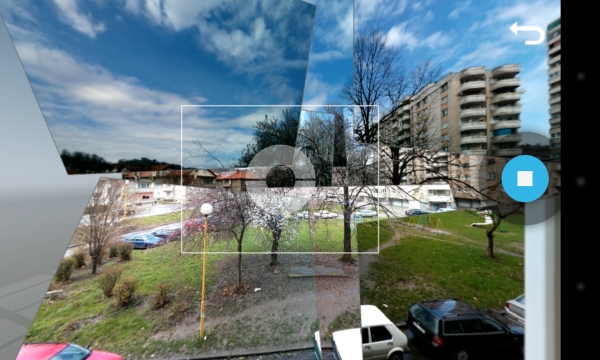
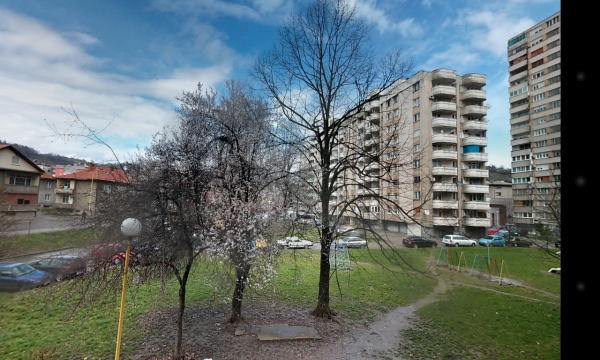
As expected the photos are far from impressive. Like most smartphones before it, the photos look quite good on the smartphone, but when you transfer them to something with a bigger screen you notice that they suffers from a lot of aggressive post processing, leaving the picture with lot of soft edges and without a lot of detail. The color reproduction is decent but contrast suffers in poor lightning conditions.


The HDR mode somewhat helps but still pictures are far from what you can see on some flagship smartphones. It simply lacks enough dynamic range to cope with high contrast scenes.

Indoor it is even worse and although it has an LED flash, don't expect much from it, as it works in close quarters and sometimes even makes things worse by overexposing the picture.
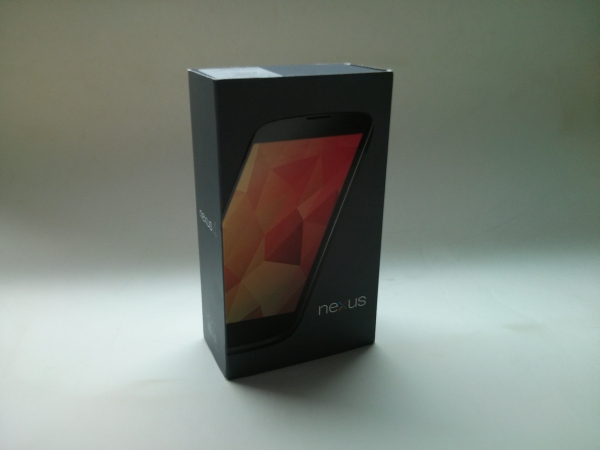
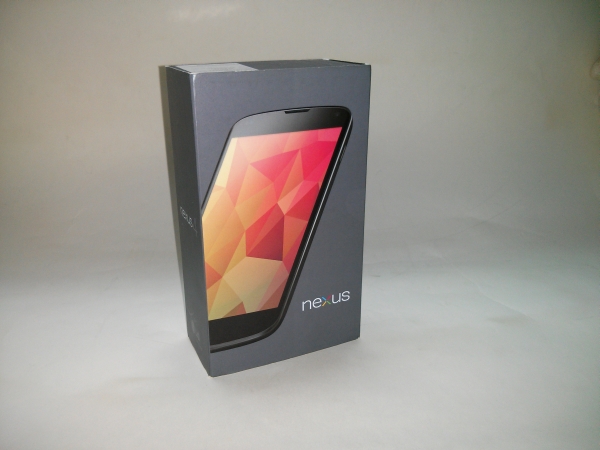
The Nexus 4 also supports 1080p video capture at 30fps and with stereo sound, but once again the quality doesn't match current gen high-end smartphones.
On the other hand, considering the price tag, the camera doesn't look as bad. It is good enough for casual photos and and videos, don't expect it to be a replacement for a real compact camera.
Performance is a mixed bag and as you might have read all around the net, the Nexus 4 suffers from a bad case of thermal throttling and we simply did not want to benchmark the phone while holding it on a block of ice or inside the freezer. We repeated the benchmarks for several times and the results certainly vary from time to time. After a few cycles, we did manage to get some results that can be averaged out.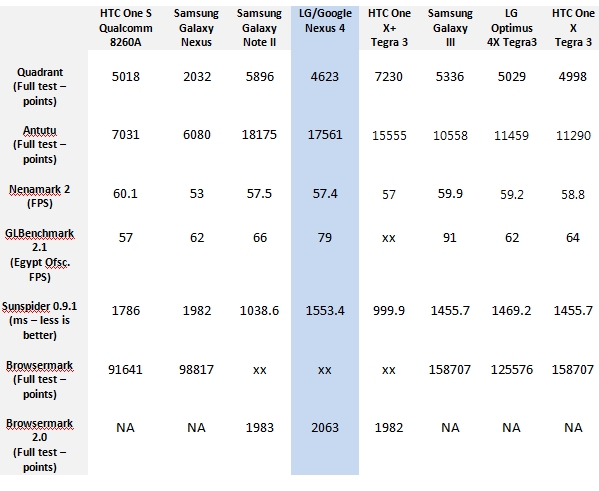
The LG Nexus 4 manages to hold its ground in Quadrant and actually delivers a pretty good result in Antutu considering that it was pitted against much more expensive smartphones. GLBenhmark 2.1 scores show that its GPU can get quite impressive results. It actually managed to outperform all tested smartphones in Browsermark 2.0.
In CF-Bench it still holds its ground quite well, but limps behind most high-end smartphones but for some reason. AndEBench favors the Nexus 4 putting it well above most smartphones, including the Samsung Galaxy S III.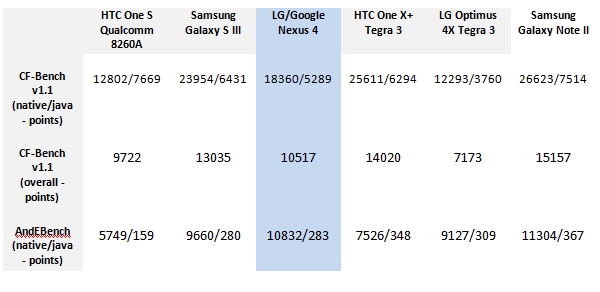
Conclusion
In the end we simply could not find any major shortcomings. Bear in mind that we compared the Nexus 4 to much pricier high-end flagship smartphones, but we are talking about a smartphone with a US $299/$349 (€299/€349) price tag and all those minor drawbacks are quickly forgotten.
The bad part of the story is if you are aiming for that impressive price tag you have to accept some compromises, but after we take everything into account, we must say LG and Google could have done a lot. They pinched a few pennies, but didn't ruin the phone. The camera might be important to someone but it will never replace a handheld point and shoot digital camera, and we don’t even want to talk about bridge or DSLR cameras. However, the cheaper 8GB version isn't for everyone. If you tend to have a lot of apps or music on your smartphone, even the 16GB version will become cramped in no time. Many smartphones are currently shipping with 32GB of internal storage, and to be honest we don't understand Google's decision to stay at 16GB. Many were hoping for a mid-life update and a 32GB version, but it never materialized.
Performance is decent and it can hold its own against many pricier smartphones. The best part of the story is that you get all the latest and future updates (at least for the time being) as soon as Google releases them, so rocking a Nexus sounds like a good idea if you can't live without the latest software.
Another drawback was the availability issue which LG and Google have thankfully overcome. The Nexus 4 is now widely available, at least there where you can actually buy it. In Europe, it is limited to certain countries on Google Play Store including Germany, Spain and France where you can buy it for €299 for the 8GB version and €349 for the 16GB one. In retail/e-tail is a completely different story as the cheapest 16GB go for around €388 to €399, so around €50 premium over Google Play Store. In case you are wondering, the 8GB version is not even available in retail/e-tail.
The Nexus 4 is definitely a big win for Google and continues the trend started with Google Nexus 7, which is still the best performance-per-buck tablet. The Nexus 4 is just more of the same, it offers stunning value for money and it is the perfect choice for consumers who don't want to be locked into a two-year carrier contract.
We would like to thank LG Electronics for providing the sample.

